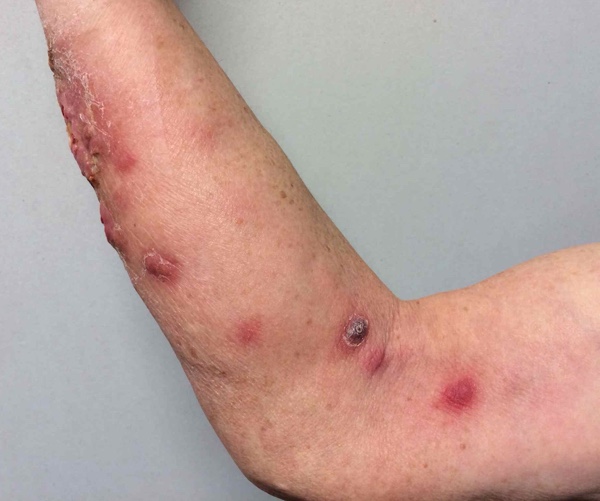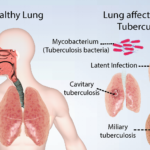Disseminated sporotrichosis is a rare, yet potentially severe, form of the fungal infection caused by Sporothrix schenckii. Although sporotrichosis predominantly affects the skin, its disseminated form extends beyond local lesions, affecting internal organs and systems. This guide provides in-depth information on disseminated sporotrichosis, including its causes, symptoms, diagnostic methods, treatment options, and preventive measures.

What Is Disseminated Sporotrichosis?
Disseminated sporotrichosis refers to the spread of the Sporothrix schenckii fungus from the initial site of infection to other parts of the body, often affecting internal organs such as the lungs, bones, joints, and central nervous system. While the localized form typically manifests as skin lesions, disseminated sporotrichosis can lead to more severe systemic symptoms and complications. This form is particularly dangerous in individuals with compromised immune systems, such as those with HIV/AIDS, cancer, or other immunodeficiencies.
Causes of Disseminated Sporotrichosis
The infection is primarily caused by the Sporothrix schenckii fungus, which thrives in decaying organic matter such as soil, plants, and wood. Human infection usually occurs through direct inoculation, such as through cuts or punctures when handling contaminated materials. In rare cases, the fungus can be inhaled, leading to respiratory complications. Once the fungus enters the body, it can spread to internal organs through the bloodstream, resulting in disseminated infection.
Risk Factors for Disseminated Sporotrichosis
Certain factors increase the risk of developing disseminated sporotrichosis. These include:
- Immunocompromised states: Individuals with weakened immune systems, such as those with HIV/AIDS, are at higher risk of disseminated sporotrichosis.
- Exposure to contaminated materials: People working in environments with decaying organic matter or contaminated soil are more likely to come into contact with the fungus.
- Existing health conditions: Conditions like diabetes, cancer, and liver disease can increase susceptibility to fungal infections.
- Animal handling: Cats, particularly those with the disease, are known to transmit Sporothrix schenckii to humans, which can lead to infection.
Symptoms of Disseminated Sporotrichosis
The symptoms of disseminated sporotrichosis can vary depending on the organs affected. While initial symptoms may resemble those of localized sporotrichosis, the progression to disseminated disease often leads to more complex clinical presentations. Common symptoms include:
Skin Lesions
- Nodular or ulcerative lesions that may be accompanied by drainage of pus.
- Lesions often appear along lymphatic drainage pathways.
Systemic Symptoms
- Fever and chills, often indicating systemic involvement.
- Weight loss and fatigue.
- Pain in the joints or bones, suggesting bone or joint involvement.
Organ-Specific Symptoms
- Pulmonary involvement: Cough, chest pain, and difficulty breathing may indicate respiratory complications.
- Neurological symptoms: If the central nervous system is affected, symptoms may include headaches, confusion, and even seizures.
- Liver and spleen: Enlargement of the liver or spleen (hepatosplenomegaly) can occur, sometimes associated with abdominal pain.
Diagnosis of Disseminated Sporotrichosis
Diagnosing disseminated sporotrichosis involves a combination of clinical evaluation, laboratory tests, and imaging studies. Key steps in diagnosis include:
Clinical Evaluation
A thorough patient history and physical examination are crucial for identifying risk factors and symptoms associated with disseminated sporotrichosis. Health care providers typically investigate any exposure to contaminated materials, travel history, or possible contact with infected animals.
Laboratory Tests
- Microscopic Examination: Tissue samples from skin lesions, lymph nodes, or internal organs can be examined under a microscope to detect the presence of Sporothrix schenckii.
- Culture: A definitive diagnosis is often made by culturing the organism from biopsy specimens or tissue samples. The fungus produces characteristic colonies on special media.
- Histopathology: Biopsy samples can be examined for characteristic fungal elements, such as yeast forms of the fungus, under a microscope.
Imaging Studies
In cases of suspected internal organ involvement, imaging techniques such as chest X-rays, CT scans, or MRIs may be used to evaluate the extent of the disease. These studies can help detect pulmonary or bone involvement.
Treatment Options for Disseminated Sporotrichosis
Treatment of disseminated sporotrichosis typically requires antifungal therapy, with medications targeting the Sporothrix schenckii organism. The treatment approach may vary depending on the severity of the disease and the patient’s immune status.
Antifungal Medications
- Itraconazole: The first-line treatment for disseminated sporotrichosis is itraconazole, an oral antifungal that targets the fungal cell membrane. It is often effective in treating both localized and disseminated forms of the disease.
- Amphotericin B: For severe cases or those with organ involvement, amphotericin B may be administered intravenously. This drug is particularly useful in immunocompromised individuals.
- Fluconazole: Another antifungal option, fluconazole, may be used in cases where itraconazole is ineffective or contraindicated.
Duration of Treatment
The treatment duration varies depending on the severity and response to medication. For disseminated cases, antifungal therapy is typically required for several months, with continuous monitoring to ensure the infection is fully cleared.
Surgery
In rare cases, surgical intervention may be necessary to remove infected tissue or drain abscesses caused by disseminated sporotrichosis. This is often considered when antifungal treatment alone does not resolve the infection.
Preventive Measures for Disseminated Sporotrichosis
Preventing disseminated sporotrichosis involves reducing exposure to the Sporothrix schenckii fungus and minimizing the risk of infection. Effective preventive measures include:
- Avoiding direct contact with contaminated materials: Wearing gloves and protective clothing when handling decaying organic material or working with soil can help prevent injury and exposure.
- Protecting individuals with weakened immune systems: People with HIV/AIDS, cancer, or other immunocompromised conditions should avoid exposure to environments where Sporothrix schenckii is prevalent.
- Proper wound care: Cleaning and covering cuts or punctures immediately, particularly when handling plants, soil, or animals, can help prevent fungal entry.

